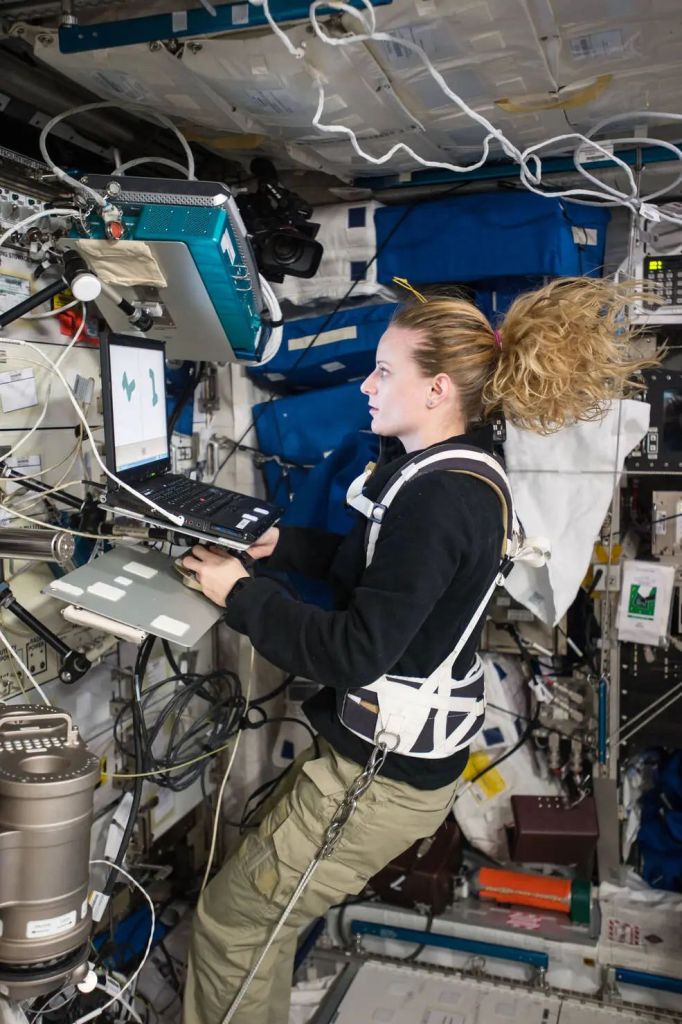OUR SPACE: Mental health in outer space
Published 1:30 pm Monday, August 26, 2024

- NASA astronaut Kate Rubins performs operations for the NeuroMapping investigation as part of an ongoing brain health research program.
Most people think that being an astronaut is a dream job, and that it’s nothing short of heaven. And to a large extent that’s absolutely true — astronauts go through a very rigorous selection process, ensuring that only the best of the best of the best make it to that lofty goal. For many astronauts it’s a life-long dream come true, and they relish every second of it.
Trending
But that doesn’t mean it’s all rainbows and unicorns.
Being in space is a teeny tiny portion of an astronaut’s career — they spend many years in training, which is physically and mentally tough on anyone. Space travel is expensive, and with your tax dollars at work it’s important that no time is wasted and every second is squeezed to the max for productivity. Astronaut work days in space are long and intense — everything you touch is the pinnacle of a long line of tests and collaboration, and every research team in Earth wants to make sure their experiments yield the most results.
This in turn can create a lot of pressure and stress. Coupled with a fairly cramped environment and near-constant supervision, it’s a tough way to make a living. Military personnel living on a nuclear submarine or researcher in polar outposts probably come closest to living conditions in space — they also work in a non-circadian environment for many months at a time.
And while the muscular deterioration caused by living in a microgravity environment is fairly well known, fewer people know about the psychological toll these situations can take. PTSD is a very real and very common condition of combat personnel, and it’s been only fairly recently that it has become a topic of public conversation, including TV ads promoting therapy.
In many ways, an astronaut’s living conditions mirror those of a soldier in combat, with similar effects on their mental health. And while the International Space Station (ISS) has a relatively quick way to return an ailing astronaut to Earth and into capable hands, an astronaut on a multi-year mission to, say, Mars is in it for the long haul.
NASA and other space agencies have a vested interest in researching on how to keep their astronauts at peak productivity levels, and that includes mental health. While virtual therapy sessions are always available, much more knowledge is needed on how to keep astronauts safe and healthy.
Trending
To that end, various experiments and proven systems are currently available. One of the most powerful tools for astronaut mental health is Earth-gazing. The windowed cupola on the ISS allows for uninterrupted views of Earth, and many astronauts discover photography as a new hobby. Observing our beautiful planet, researching the features rolling by below and learning about their history and ecology is quite satisfying.
A more modern approach is the availability of virtual reality — those dorky-looking goggles that allow you to see a different environment as if you were in it, and they can be complemented by sounds, smells and even tactile sensations. Some astronauts bring musical instruments to space, others write poetry or draw or meditate.
One of the most difficult aspects of space station living is the lack of a proper day/ night cycle. ISS residents can witness 16 sunrises and sunsets every day, which would throw anybody’s internal clock way off. Adjusting the lighting on board to more closely mimic a natural day may really help regulate your perception of time.
Communication with ISS personnel is not that difficult and near-instantaneous. But an astronaut on Mars might have to wait some 20 minutes for a reply from Earth. This makes a conversation extremely difficult and very frustrating — a whole new way to communicate, interspersed with other activities, has to be followed.
The effects of microgravity on our brains and other systems is not all that well understood yet — it just takes a long time to measure how many years it takes for brain connectivity to return to normal after spaceflight, and with such a limited sample size it’s not a quick process. Combating muscular atrophy is a constant struggle on the ISS — astronauts work out at least two hours per day — but how to keep your brain healthy is very much a work in progress.
Astronauts are definitely a group of people with “true grit,” but the days of muscling your way through an issue and just “toughen it out” are long over. When help is millions of miles away and an urgent conversation is chopped up by 20 minute response wait times, you need to stay ahead of any issues. Keeping astronauts mentally balanced, happy and content is an urgent matter.
Learn more about mental health in outer space at https://www.nasa.gov/hrp/human-factors-and-behavioral-performance/
—Beate Czogalla is the professor of Theater Design in the Department of Theatre and Dance at Georgia College & State University. She has had a lifelong interest in space exploration and has been a Solar System Ambassador for the Jet Propulsion Laboratory/ NASA for many years. She can be reached at our_space2@yahoo.com .





